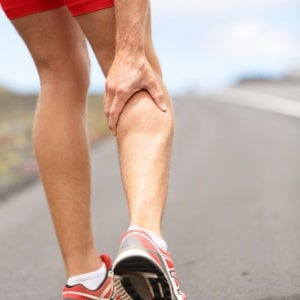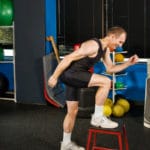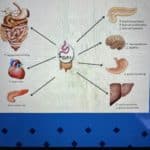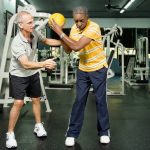
December 2019
Please help us celebrate 30 years helping Nashville’s finest stay healthy and fit.
December 14 from 6-8 p.m. at STEPS
Cardio Intensity, Brain Blood Flow and Age (in men)
Among the many other insults of age, include reduced blood flow to the brain. This was linked to decreased cognitive function and, in extreme cases, dementia. One study had shown that habitually active older adults had 17% greater cerebral blood flow (CBF) than their sedentary peers. Other studies showed that CBF transiently decreased during continuous cardio exercise in older adults.
Knowing that a regular aerobic exercise program is good for the vascular system as a whole, researchers wanted to test the acute effects of continuous vs interval exercise on CBF in young (25+/- 3 yrs) and old (69+/-3 yrs) men.
We know a lot about interval training as it – especially HIIT – has taken fitness by storm lately. I have written about it here, here, here and here, but very little is known about its role in CBF, especially at different ages.
The researchers in this study had subjects do intensity- and work-matched continuous cycling for 10 minutes with follow up measurements taken over a 10 minute rest period; and interval cycling of 10 1-minute sprints at 60% of the subject’s max work capacity followed by 1-minute of seated rest. This equalized the total amount of exercise by each group to 10 minutes at the same intensities.
Several interesting results were found. For one thing, total CBF during exercise was greater during continuous compared to intervals in the young but not the older men. During intervals, the older men’s middle cerebral artery blood flow velocity (MCAV) was elevated till the 12th minute while the younger men’s continued to rise until the 20th minute.
Also, intervals boosted older men’s MCAV as much as during continuous exercise, contrary to some studies suggesting they may impair CBF. Despite the fact that young men saw greater increases during continuous cycling than during intervals, it was deemed good news for older men that intervals did not impair brain blood flow. No matter what our kids might think.
MSSE July 2019
Running Injuries, Re-visited
Running injuries tend to be chronic in that they take a while to manifest despite popping up suddenly…apparently. It has long been known that the three most common causes of injuries are doing too much, too soon, on a different terrain/with different shoes. We have covered many of these in prior blog posts, here, here, here and here. A study attempted to track injured athletes’ training schedules to determine if indeed a “sudden change in [weekly] training load” influenced their injuries.
A healthy cohort of 261 uninjured runners’ training schedules were followed for 14 weeks. Weekly emails were used to survey the subjects for running injuries. Fifty-six (21.5%) did get injuries. Three weeks into the training, more runners were injured when they increased mileage anywhere from 20% to 60% – despite the old, hard-and-fast rule of increasing load by no more than 10% per increase compared to those who increased by less than 20%.
The results speak for themselves: to avoid running-related injuries, do not make substantial changes in your training schedule by either increasing mileage, speed runs, or terrain. This mantra has been around at least 45 years and now there’s some solid evidence to support it. Simply, abide by the 10% Rule.
Journal of Orthopedic and Sports Physical Therapy, Apr. 2019
Tid Bits
It’s nuts, I know. But a study reported at this year’s World Congress of Cardiology assessed 5432 adults who did not have heart disease in 2001 and followed them for 12 years. Every 2 years with food-frequency questionnaires. They found that eating nuts twice a week was associated with a 17%lower risk of death due to heart disease compared to those who ate them once every 2 weeks. Duke Medicine HealthNews Nov. 2019
A most-interesting study tested the hypothesis that highly processed foods are more apt to cause weight gain by encouraging overeating. Twenty healthy subjects (avg. 30 yrs, most were overweigh) spent 4 weeks in a metabolic ward. For 2 weeks they ate as much as they wanted of an ultra-processed food diet, then switched to a healthier, unprocessed food diet. All their food intake was measurable. During the 2 weeks of processed foods, they ate on average about 500 extra calories vs that which they ate during the unprocessed food diet. Excess calories came from fats and sugars. UC Berkeley Wellness Letter, Oct. 2019
Knee joint injuries account for about 50% of all running-related injuries, more commonly in females. These kinds of injuries predispose to osteoarthritis, particularly in female runners over 50. What gives? A multi-center study explored the “acute effects of altered step length (SL) and step frequency (SF)” on lower extremity mechanics. Other studies have shown a 5-10% increase in SF reduces compressive forces and tibiofemoral (TFJ) axial forces. This study assessed those forces during self-selected SF with speed pre-set at 6 mph. They found that those with a SF>178 steps/min had the lowest peak TFJ shear and compressive forces while those with a SF<166 steps/min had the highest. More steps = less impact, less damage to the joint. MSSE July 2019
















